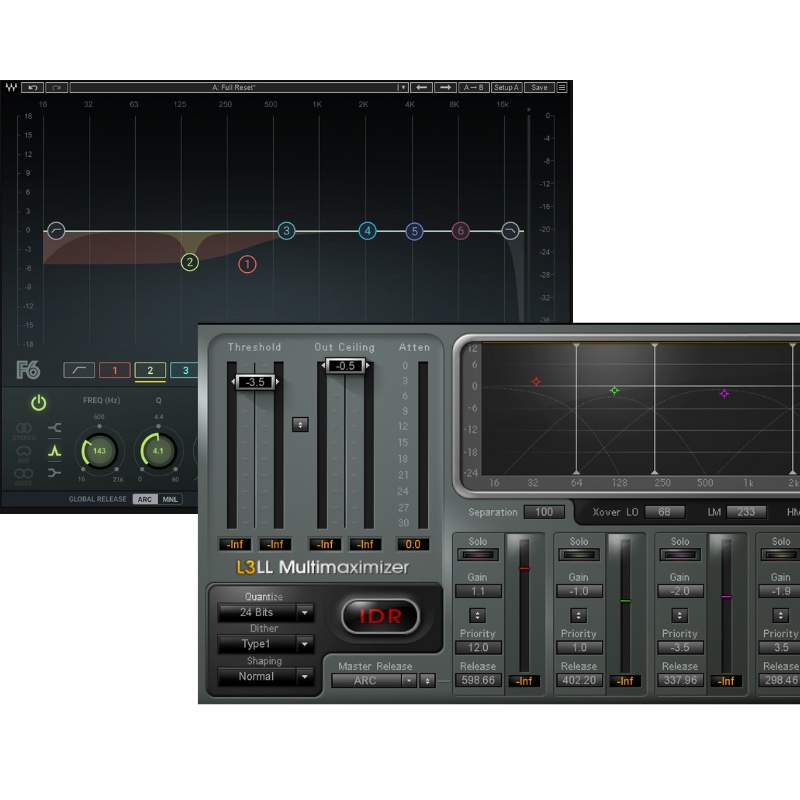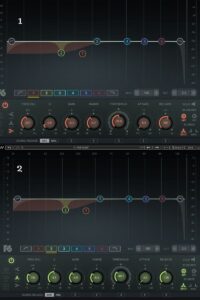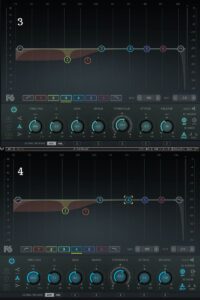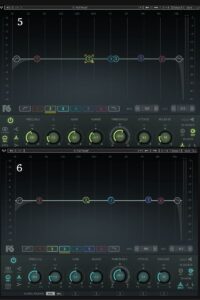Dynamic EQs and Multiband compressors are a crowd favorite in the mix engineer world. Personally, if I were to be stranded on an island and had to use only one plugin or insert, I would choose a dynamic EQ, however, both have significant strengths and applications.
In theory, the two are fairly similar, with most sources stating that the tools have minimal practical differences:
A dynamic EQ has multiple configurable parametric EQ bands that correspond to the user’s chosen threshold, with variable attack and release parameters. The dynamic EQ can achieve subtlety, with more precise, surgical operation, and can dance along to an input’s dynamic tonality. This tool achieves linearity until, of course, the band is engaged.
A multiband compressor splits the frequency spectrum into multiple bands (two, four, or even 6, in the case of say the Waves C6) that have corresponding compressor functionality to each of these bands. Multibands differ in large part from dynamic EQ in that from the instance of engagement their crossover filters impart phase shift onto the application. This can “color” the sound, creating artifacts, resonances, and other potentially unwanted information.
I will typically lean on a dynamic EQ as opposed to a multiband because of their ability to maintain more musical processing; the dynamics of the artist’s performance can be managed more effectively, in instances of proximity effect, or if their voice becomes strident throughout. In previous applications, while using Waves F6, I was able to simultaneously apply some subtractive EQ to the input (example 1), and also adjust a variety of bands throughout the vocalist’s range to accommodate for proximity; sibilance; resonances (example 3 and 4); and occasional nasal buildup or lack of clarity when the artist was feeling under the weather. You can see these in the examples below. Each band has varying release times, but this was determined by listening to the source and dialing it in to taste.
Using a sidechain within dynamic EQs will help achieve vocal clarity in a busy mix. To compete with masking frequencies, you can key from an input to only attenuate certain bands when a threshold is crossed, allowing them to return to position when the band is not triggered. For instance, a male vocalist singing within a dense mix might compete for space with the rhythm guitar or lead guitar. You can throw an instance of your flavor of dynamic EQ onto the rhythm guitar channel and tell it to attenuate low mids at a desired Q (example 5) and engage it for a specific period of time; when the vocalist backs away, those bands will once again fill the appropriate gap in the mix. Example 6 here shows the same 400 Hz attenuation and also another just under 1kHz. I also tend to reach for this plugin if I want to soften harsh harmonic content, instead of opting for something that’ll squish a broader frequency range. It’s also important to note that you can choose to process bands in mid-side or stereo modes.
These tools are a game-changer for not only input channels but also for groups and reverb returns.
Choose your platform, choose your flavor. Most consoles have either of these on-board, but Waves and other third-party programs also have great software, if you have the hardware to support using them. My processing for a single input has varied depending on what console I’ve been given and what tools were on hand. Do some research and experiment for yourself!



